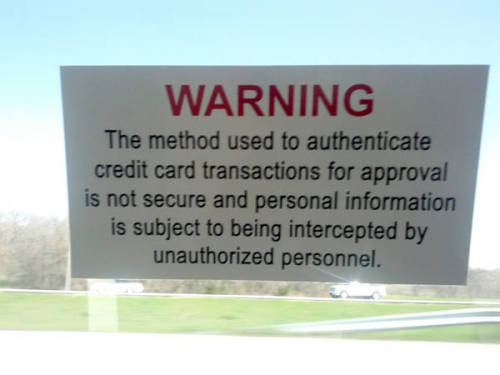Some fun CSS things including the following:
head { display: block; border-bottom: 5px solid red; }
script, style, link { display: block; white-space: pre; font-family: monospace; }
script:before { content: “ ”; }
As you might have guessed, Flame is also US/Israel produced malware. From the people who brought you Stuxnet, its… Flame!
Won’t someone think of the URIs?! At some point in the not too distant past, MSDN changed how you link to documentation and broke all existing links. This included some of links in documents on MSDN.
Use of my old Hotmail account has really snuck up on me as I end up caring more and more about all of the services with which it is associated. The last straw is Windows 8 login, but previous straws include Xbox, Zune, SkyDrive, and my Windows 7 Phone. I like the features and sync'ing associated with the Windows Live ID, but I don't like my old, spam filled, hotmail email address on the Live ID account.
A coworker told me about creating a Live ID from a custom domain, which sounded like just the ticket for me. Following the instructions above I was able to create a new deletethis.net Live ID but the next step of actually using this new Live ID was much more difficult. My first hope was there would be some way to link my new and old Live IDs so as to make them interchangeable. As it turns out there is a way to link Live IDs but all that does is make it easy to switch between accounts on Live Mail, SkyDrive and some other webpages.
Instead one must change over each service or start over depending on the service:
So! Here is the trailer for a web series I’ll be hosting, where I chat with cool people over actual alcoholic drinks. We’ve shot a dozen of these so far and I am grateful to have been asked to host them. I got to have interesting conversations with strangers and friends alike.
It goes live on Monday 5/7!
Internet terms!
Do Cute Kids Like Radiohead? - “Paranoid Android” - You Review #09 (by noisey)
“I don’t think he’s got any friends”. Harsh.

(via DIY Building Blocks Furniture)
Its jumbo Legos to make furniture. At least in theory very cool, although I wonder about the comfort of a chair made from this.
Javascript tool says if a photo is shopped. It can tell by looking at the pixels. Seriously. Links to cool presentation on the theory behind the algorithm behind the tool: http://www.wired.com/images_blogs/threatlevel/files/bh-usa-07-krawetz.pdf
Astronaut endorses destroying the moon!
The best exchange on the IAmA:
Ghostshirts it’s been a dream for a long time now, do you think that we’ll actually be able to blow up the moon in our lifetime?
RonGaran I truly believe that we can accomplish anything we set our minds on. We only need the will to do it

Follow the link for other great Al themed artwork.
(via http://twitter.com/alyankovic/statuses/177517595874951171)
Implied HTML elements, CSS before/after content, and the link HTTP header combines to make a document that displays something despite having a 0 byte HTML file. Demo only in Opera/FireFox due to link HTTP header support.

(via Taxi-window sticker: our security stinks and your credit card will be sniffed)
Don’t you have to meet some minimum security requirements to process credit card transactions?
Most existing DRM attempts to only allow the user to access the DRM'ed content with particular applications or with particular credentials so that if the file is shared it won't be useful to others. A better solution is to encode any of the user's horrible secrets into unique versions of the DRM'ed content so that the user won't want to share it. Entangle the users and the content provider's secrets together in one document and accordingly their interests. I call this Blackmail DRM. For an implementation it is important to point out that the user's horrible secret doesn't need to be verified as accurate, but merely verified as believable.
Apparently I need to get these blog posts written faster because only recently I read about Social DRM which is a light weight version of my idea but with a misleading name. Instead of horrible secrets, they say they'll use personal information like the user's name in the DRM'ed content. More of my thoughts stolen and before I even had a chance to think of it first!
There’s weird stuff you’d think is public domain but isn’t including Martin Luther King Jr.‘s “I Have a Dream” speech. FTA: ”If you want to watch the whole thing, legally, you’ll need to get the $20 DVD.
That’s because the King estate, and, as of 2009, the British music publishing conglomerate EMI Publishing, owns the copyright of the speech and its recorded performance.”
“Serious Sam 3′s DRM is brilliantly cruel, punishing only those who pirated it. By relentlessly pursuing them with a giant invincible armoured scorpion.”
Last time I wrote about how I switched from Delicious to Google Reader's shared links feature only to find out that week that Google was removing the Google Reader shared links feature in favor of Google Plus social features (I'll save my Google Plus rant for another day).
Forced to find something new again, I'm now very pleased with Tumblr. Google Reader has Tumblr in its preset list of Send To sites which makes it relatively easy to add articles. And Tumblr's UX for adding things lets me easily pick a photo or video to display from the article - something which I had put together with a less convenient UX on my bespoke blogging system. For adding things outside of Google Reader I made a Tumblr accelerator to hookup to the Tumblr Add UX.
Of course they have an RSS feed which I hooked up to my blog. The only issue I had there is that when you add a link (and not a video or photo) to Tumblr, the RSS feed entry title for that link is repeated in the entry description as a link followed by a colon and then the actual description entered into Tumblr. I want my title separate so I can apply my own markup so I did a bit of parsing of the description to remove the repeated title from the description.
From the document: ‘Appendix B. Implementation Report: The encoding defined in this document currently is used for two different HTTP header fields: “Content-Disposition”, defined in [RFC6266], and “Link”, defined in [RFC5988]. As the encoding is a profile/clarification of the one defined in [RFC2231] in 1997, many user agents already supported it for use in “Content-Disposition” when [RFC5987] got published.
Since the publication of [RFC5987], two more popular desktop user agents have added support for this encoding; see http://purl.org/
NET/http/content-disposition-tests#encoding-2231-char for details. At this time, only one major
desktop user agent (Safari) does not support it.
Note that the implementation in Internet Explorer 9 does not support the ISO-8859-1 encoding; this document revision acknowledges that UTF-8 is sufficient for expressing all code points, and removes the requirement to support ISO-8859-1.’
Yay for UTF-8!